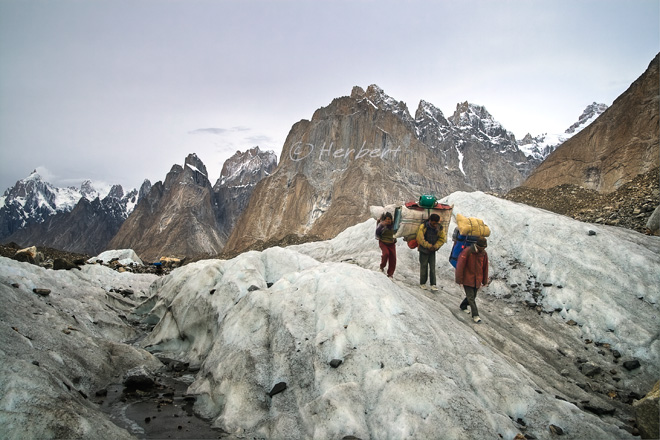
Location: On Baltoro Glacier, Concordia, Pakistan (?35� 43' 60 N 76� 16' 60 E)
Date: 6 July 2007; 7.25am
Camera: Canon 400D with Sigma 17-70/f2.8-4.5
I have never been on an expedition-type trek until the trek to Concordia/K2. All my previous treks including those in the Himalayas, China, NZ, South East Asia and so on are mainly without guides or porters. Even if there are guides involved, there are no porters to carry our belongings. So the trek to Concordia was a new experience, and quite an interesting one. As there are no villages or any means to get food/water all the way to K2 Base Camp, all the supplies must be carried for the 10+ days return trek. Similarly all the necessary cooking and eating utensils as well as bedding needs (tents and sleeping bags etc) must be brought on the trek. There were about 10 of us and we had up to 30+ porters at the beginning of the trek. The number slowly dwindles as some were sent back along the way as supplies were consumed- the porters are aware that their services are only needed for part of the trek. This is important as they are paid by the days (and distance); so it is necessary that they know what they are going to be paid for- unlike some stories that I heard in Nepal where trekkers engaged guides/porters for a certain trek but send them back when they met friends on the trek and decide to pool their resources by using less guides/porters. This is rather unethical and is rumoured to be common practice by trekkers of particular nationalities. Porters make a hard living and they are an essential and important component of long and arduous treks, and more so, on climbing and other expeditions. They should and must be treated with respect.